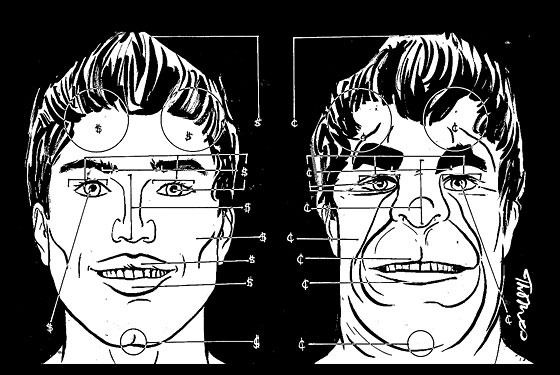
Forget the weenie-tuggers of ChatRoulette and the would-be American Idols on YouTube. If it is human perversity that you seek online—and it probably is, at least some of the time—close your browser and cast your memory back to the glory days of HotOrNot.com, a site that invited the user to upload a photo for public viewing, return an hour or two later, and find that a consensus of 8,000 or 9,000 anonymous viewers had pegged her a 3.2 on a scale of one to ten.
HotOrNot solicits zero information from its users—no e-mail address, no birthday, no income range. Too bad.
In another, more synergistic universe, the site might have been a useful tool for labor economist Daniel S. Hamermesh, whose book Beauty Pays takes a more high-minded approach to the vagaries of looks. Specifically, it attempts to explain why attractive people make more money than unattractive people. A lot more money, in fact: $230,000 over the course of a lifetime, which holds true even in professions where looks wouldn’t seem to matter. Hamermesh found that fetching professors, for example, earn 6 percent more than their average-looking peers, while unattractive quarterbacks earn 12 percent less than their hunkier counterparts. Men, in fact, suffer the greater repulsiveness penalty in general: Unattractive women earn 3 percent less than average-looking women, while unattractive men’s take-home is reduced a whopping 22 percent.
But wait—how can something as subjective as beauty hold any value in an economic context? Therein lies the cold truth at the heart of these findings: A common standard of beauty does exist. Based on an attractiveness scale of one to five, most people surveyed will come to near agreement on a test subject’s looks, a finding that holds true across all cultures. And while extreme beauty and extreme ugliness are rare, 10 to 15 percent or so of the population falls into the “below-average attractiveness” category, where they will endure their pronounced asymmetries as long as they live. Beauty is not only scarce, it turns out, but unobtainable to those born without it: Studies show that homeliness is approximately as easy to change as race, which is to say, it’s not.
Knowing the extent to which people are economically penalized (or rewarded) for their looks raises the question: Should the ill-favored be protected? And if so, how? Hamermesh, in the Über-cautious fashion of an economist, predicts that the most unsightly people will eventually receive the same kinds of legal protection extended to Americans with disabilities. Putting such statutes in place would require agreeing on a universal scale of attractiveness, and then having eligible people step forward to claim their protections. The financial incentive is obvious; the social and psychological costs, murkier. Would you be willing to petition the U.S. government for official recognition of your ugliness? Would you do it for $230,000?
Hamermesh notes that such a system, should it ever come to pass, will only fix so much. “The burden will, as it always has been, be on bad-looking people to make the most of their advantages and to minimize the impacts of the disadvantages caused by their looks,” he writes. As homilies go, this one has at least a hint of redemptive symmetry about it: The authentically ugly individual may be unwise to pursue a modeling career, but a great-looking dummy will be equally disappointed should he set his sights on a Nobel. If you aren’t sure which route applies to you, don’t worry. HotOrNot is now available in app form.
Have good intel? Send tips to intel@nymag.com.